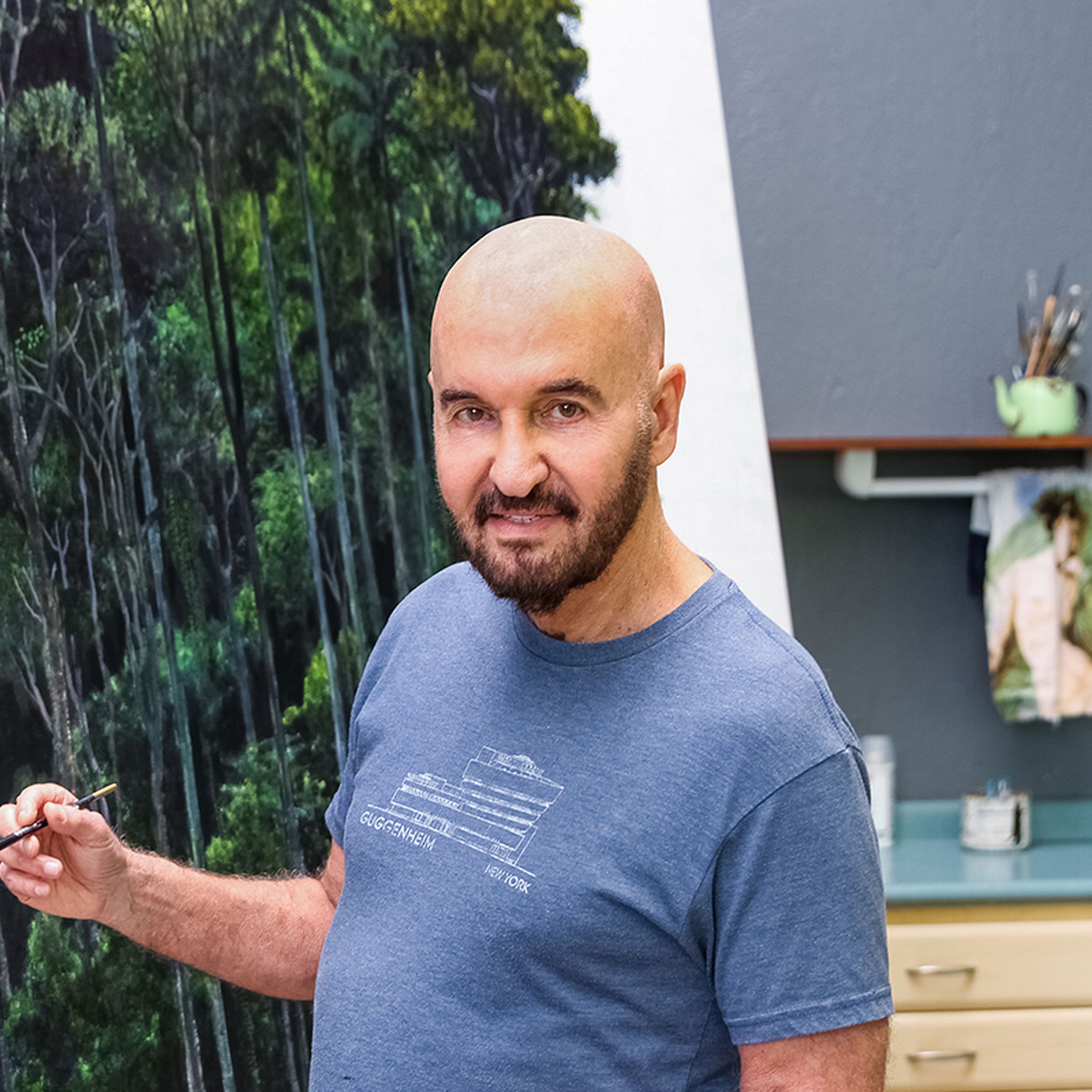“I believe it’s through nature that we find freedom.”
Tomás Sánchez's symbolic landscapes have made him one of the most important living Cuban artists. Part of Volumen Uno in the 80s, a movement that resisted the heavily censored Cuban art of the time, he has since received international recognition, with auction prices over USD 600,000. Inspired by the Romantics and his daily meditation practice, Tomás paints the wild beauty of his homeland, as well as harrowing panoramic views of garbage dumps. The works are incredibly detailed with a lush tropical palette, encompassing the physical wonder of the natural world, its immense spiritual power, and...
Bio
Tomás Sánchez was born in 1948 in Cuba, and is now based in Costa Rica.
Achievements
Sanchez became renowned internationally when he was awarded the Joan Miró International Drawing Prize in 1980. At this time he was also a part of Volumen Uno, now recognised as a seminal moment in the history of contemporary Cuban art.
Did you know?
The artist works from memory and imagination, transforming his experiences into new visualisations through meditation and realising them as painstakingly-detailed paintings.


